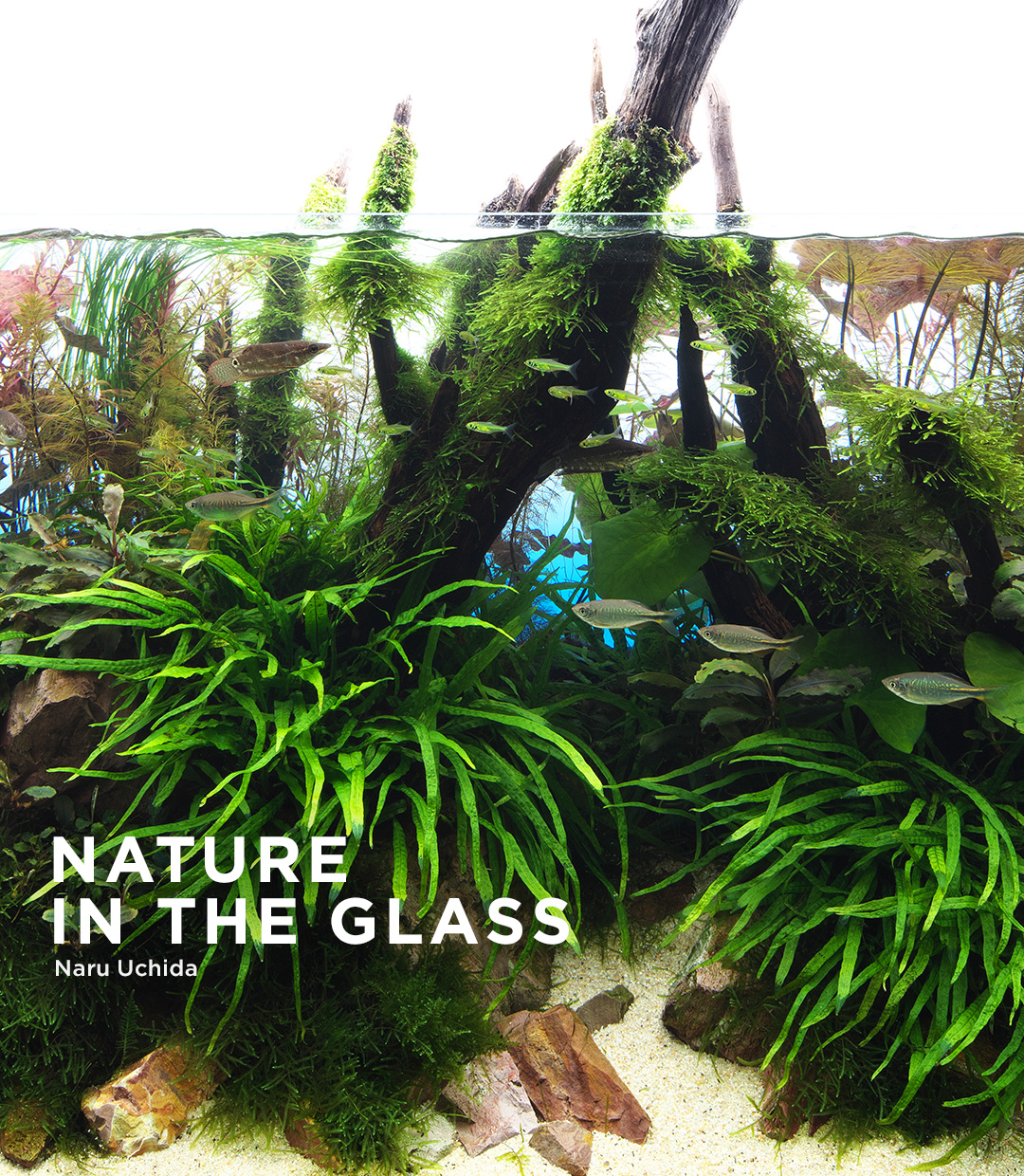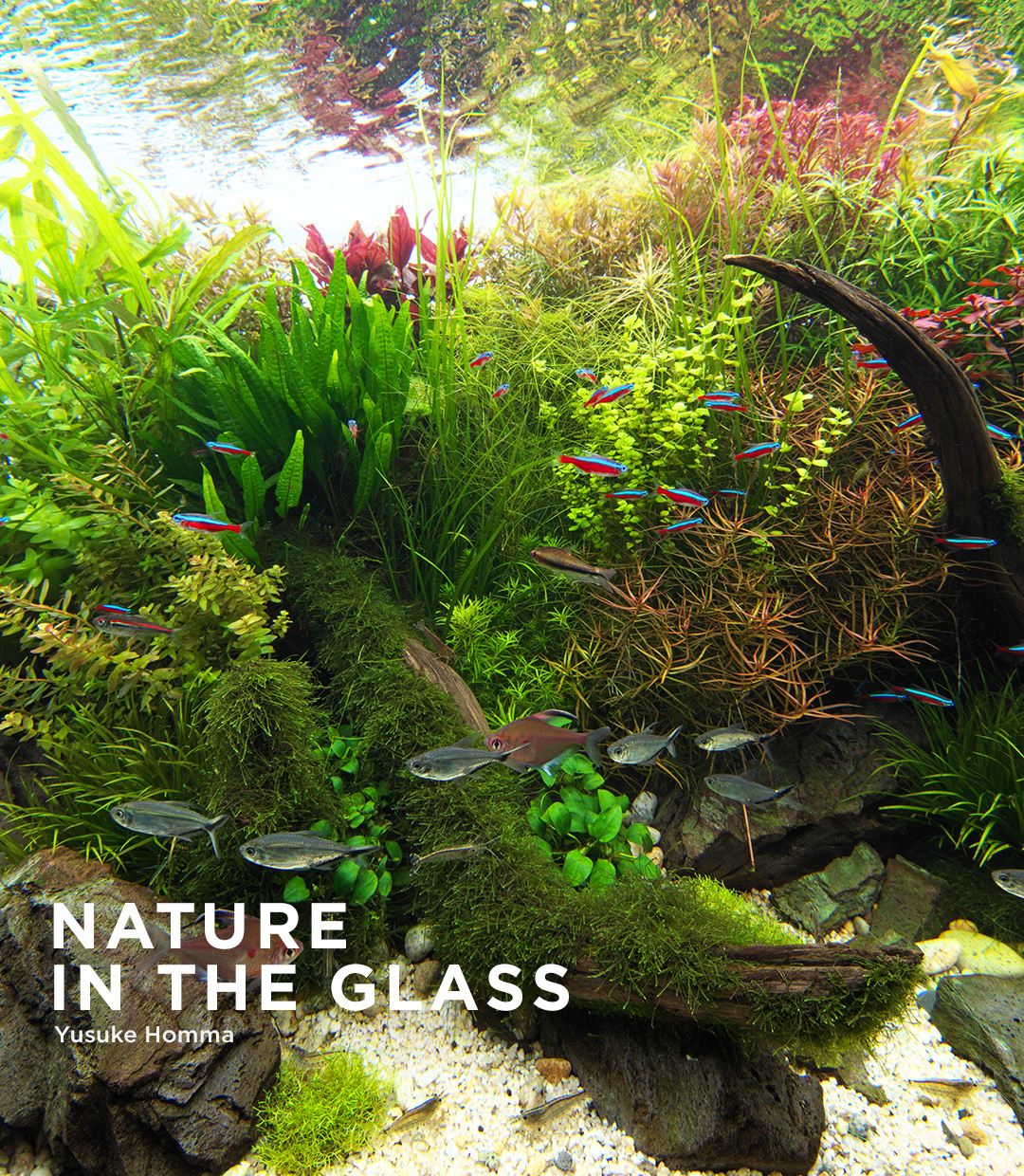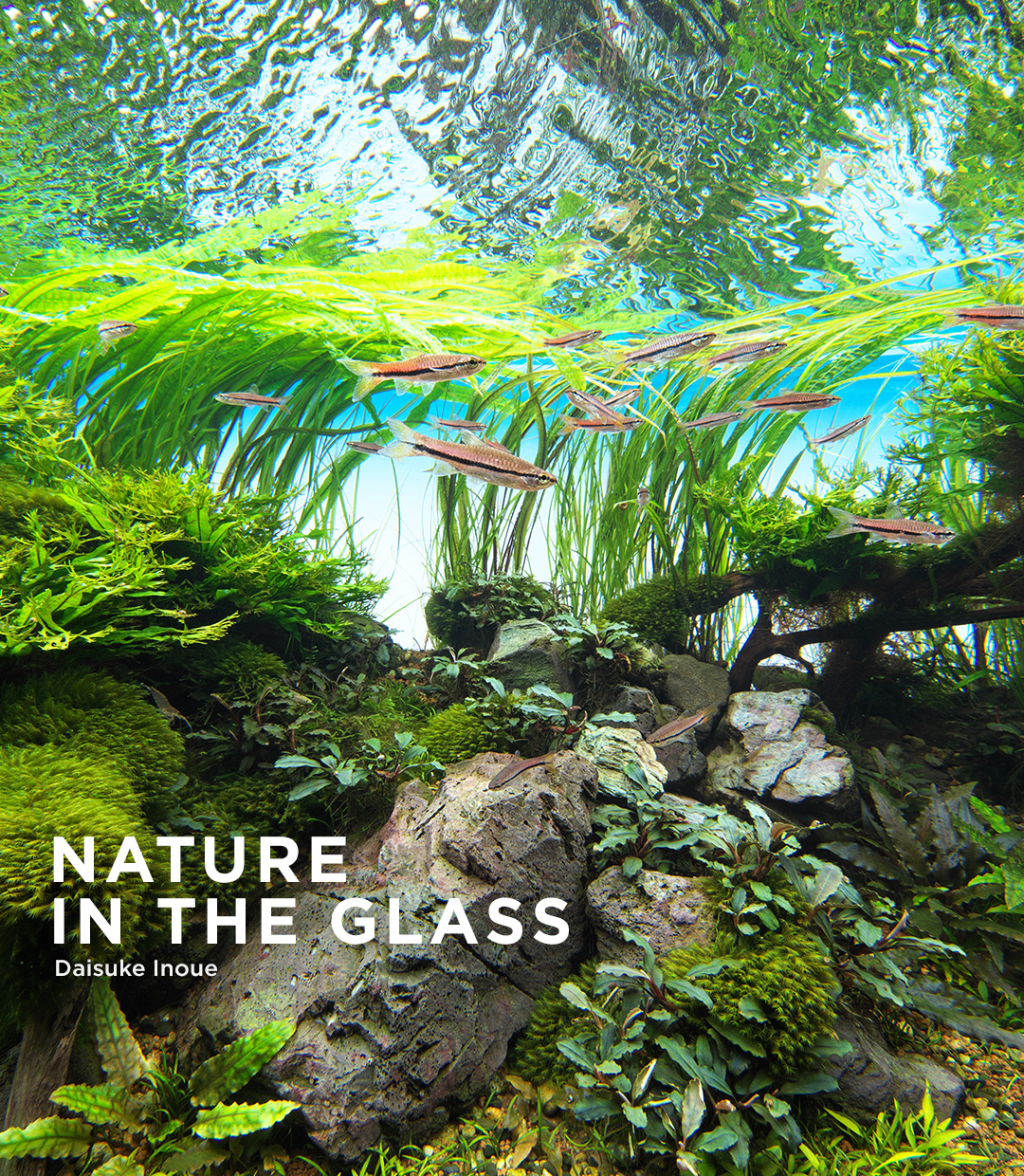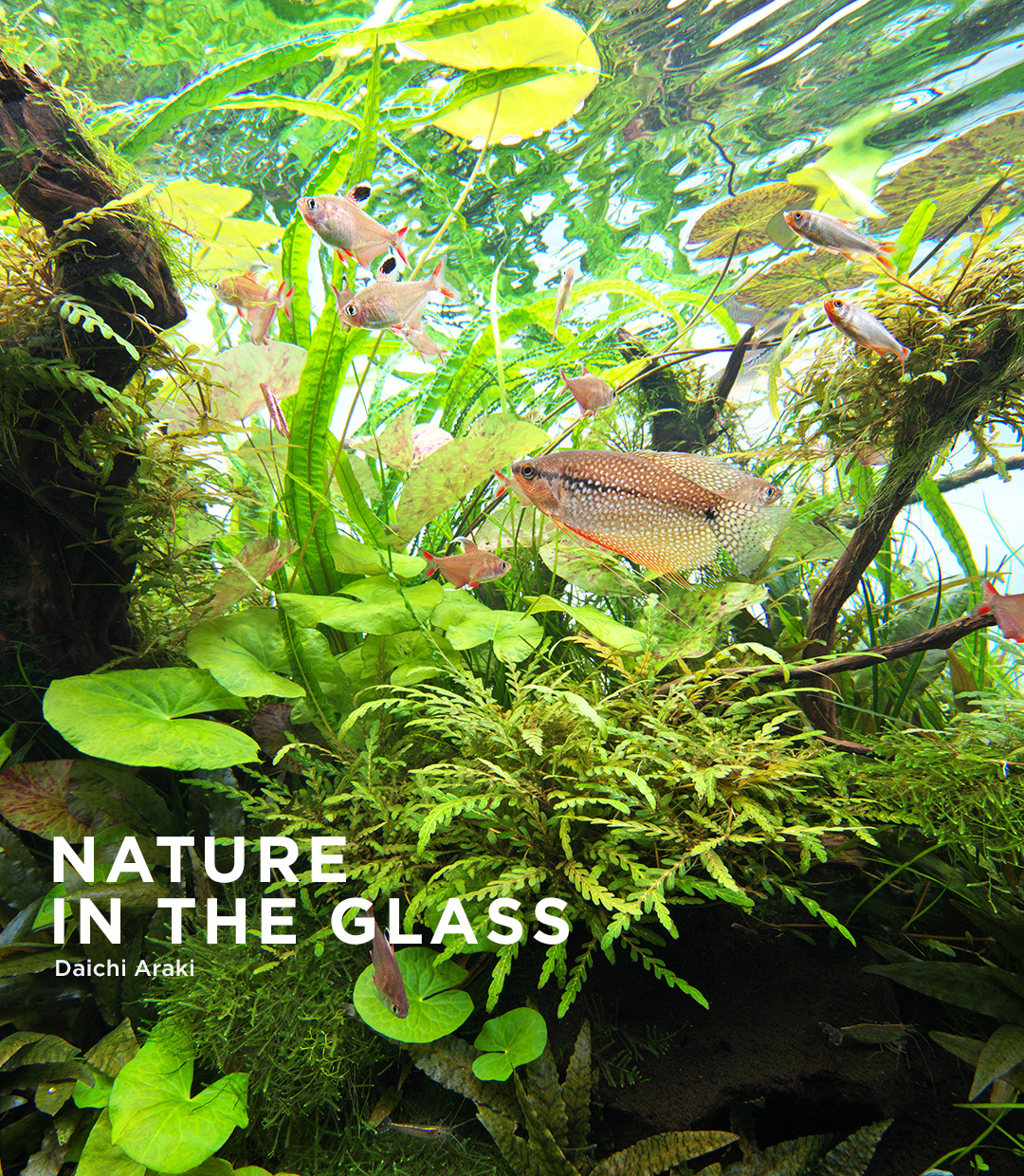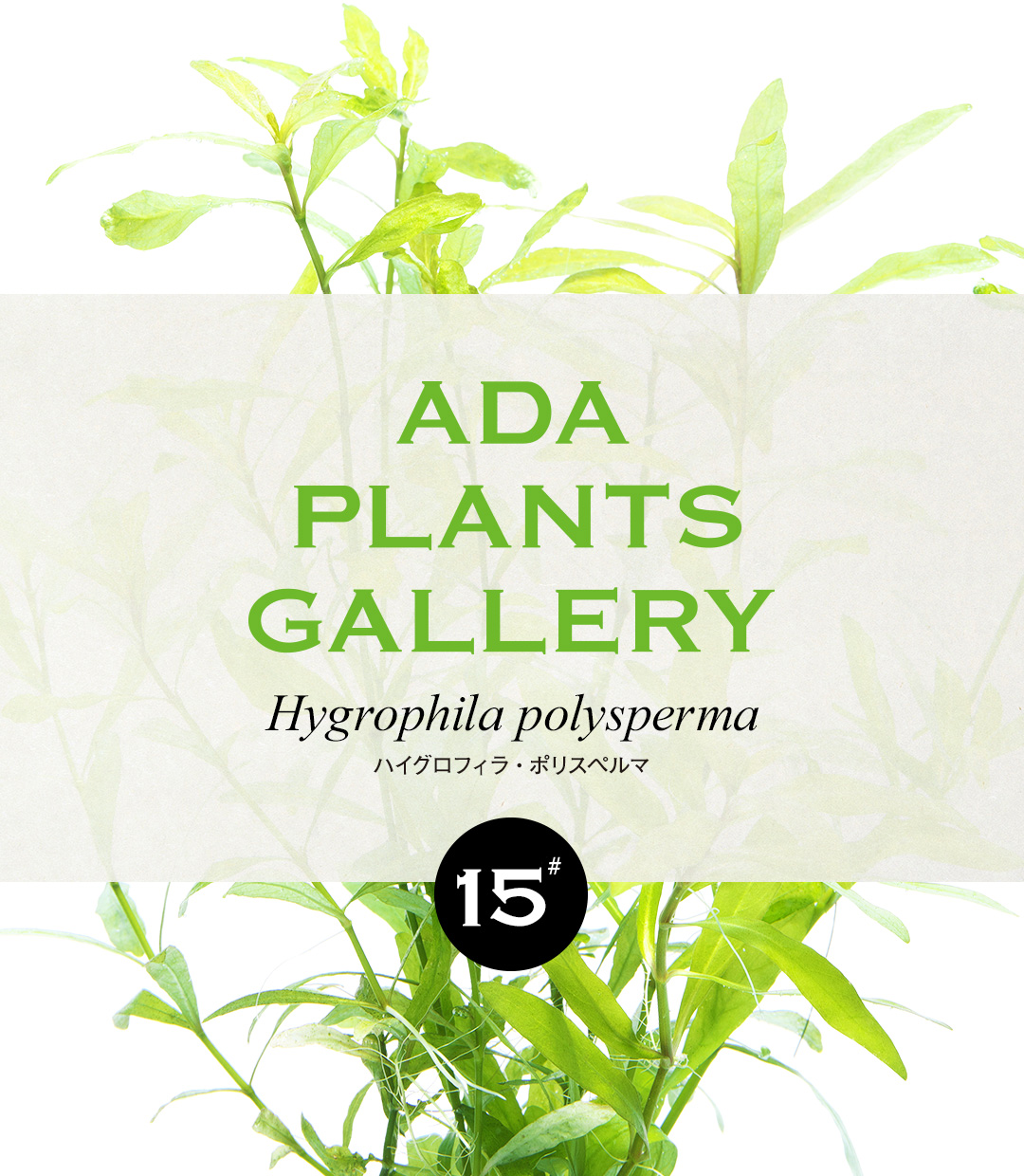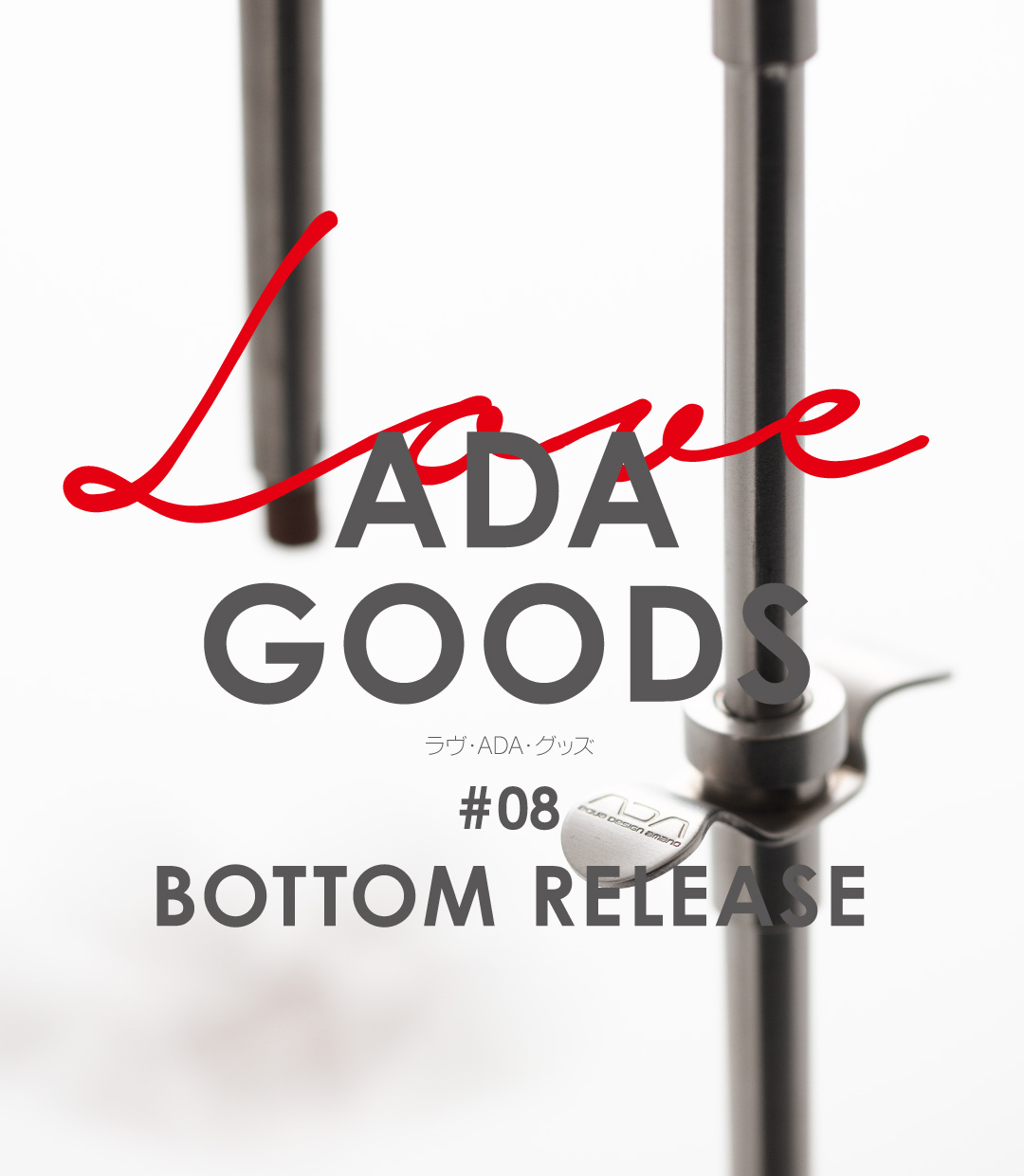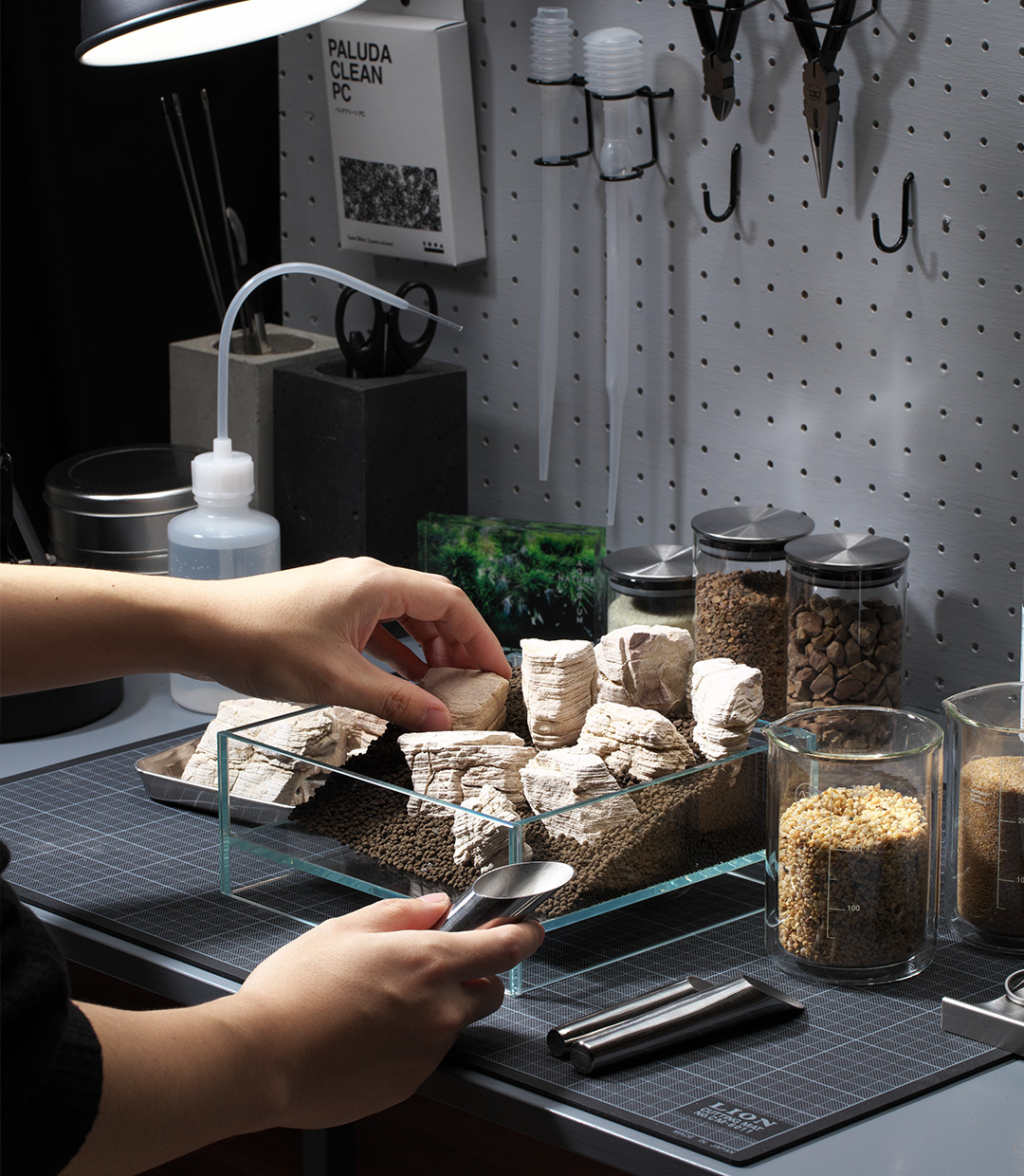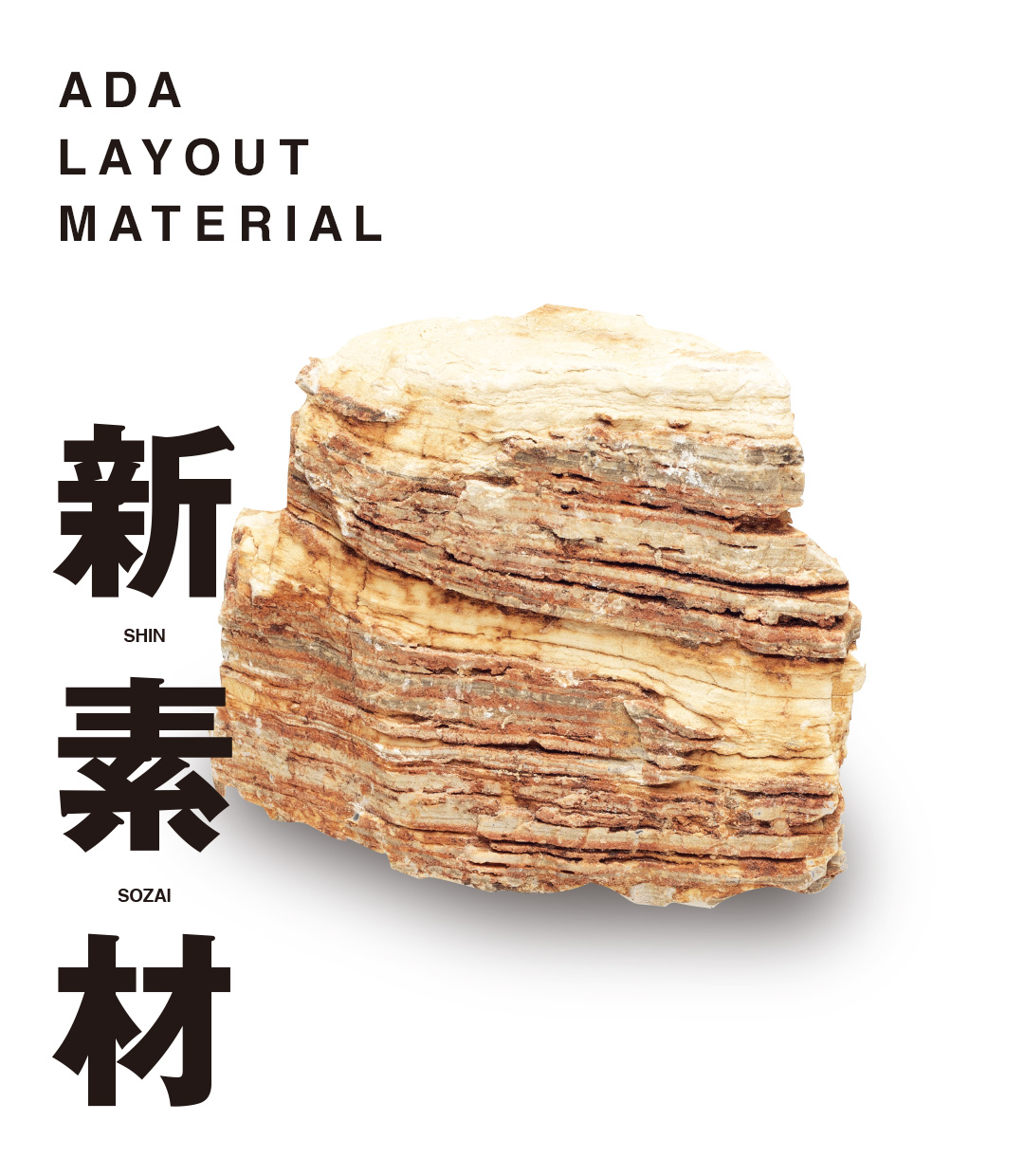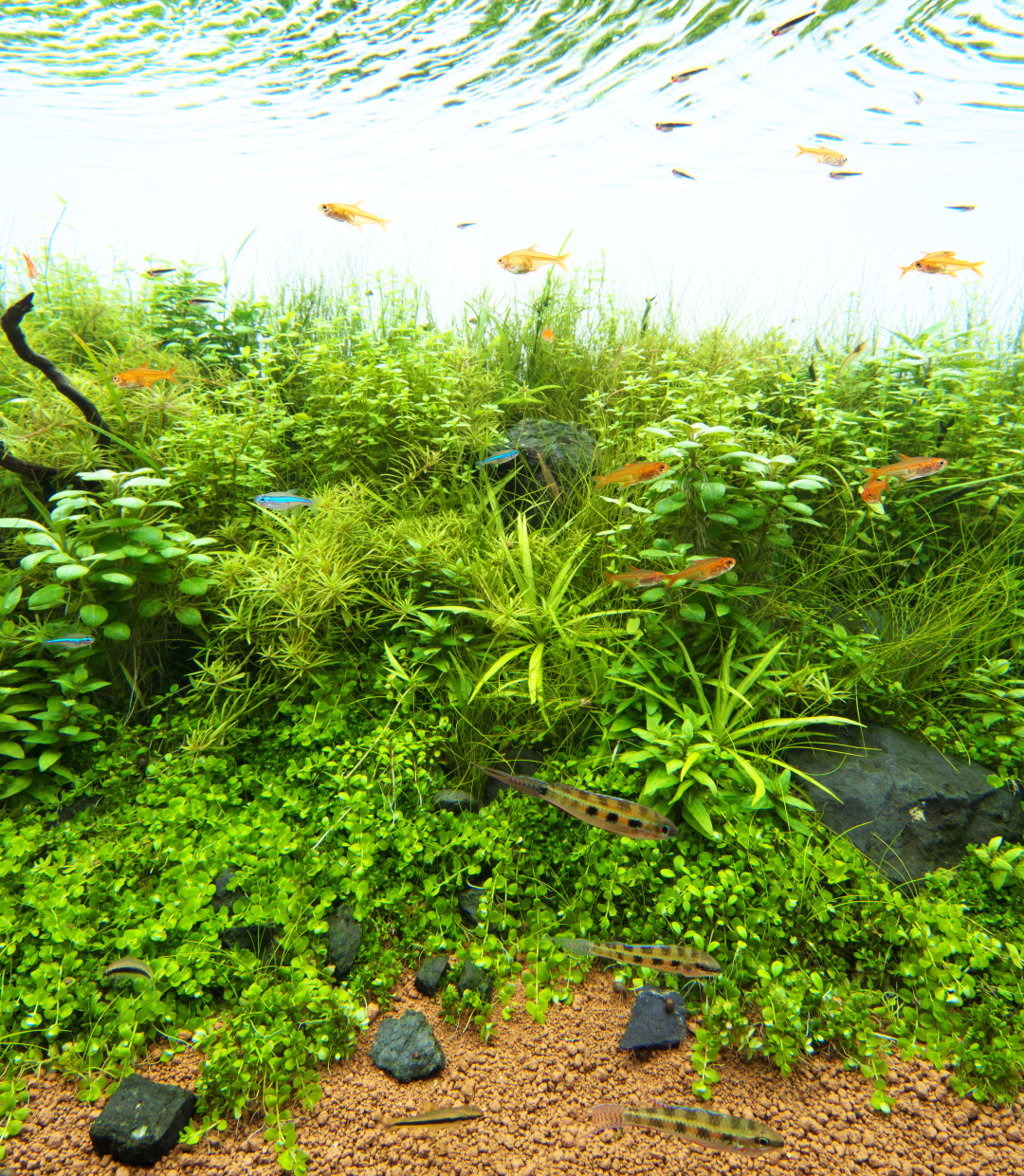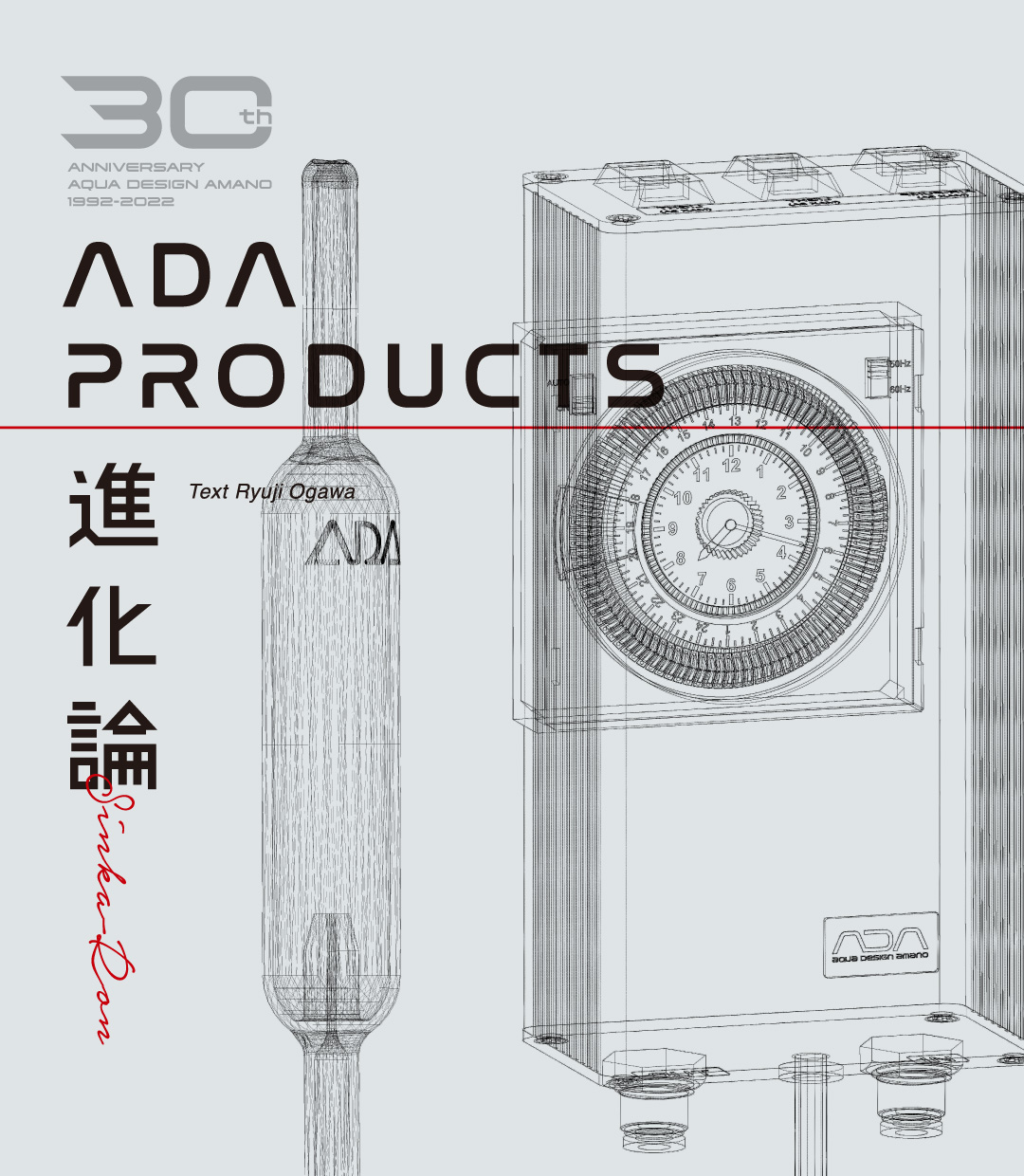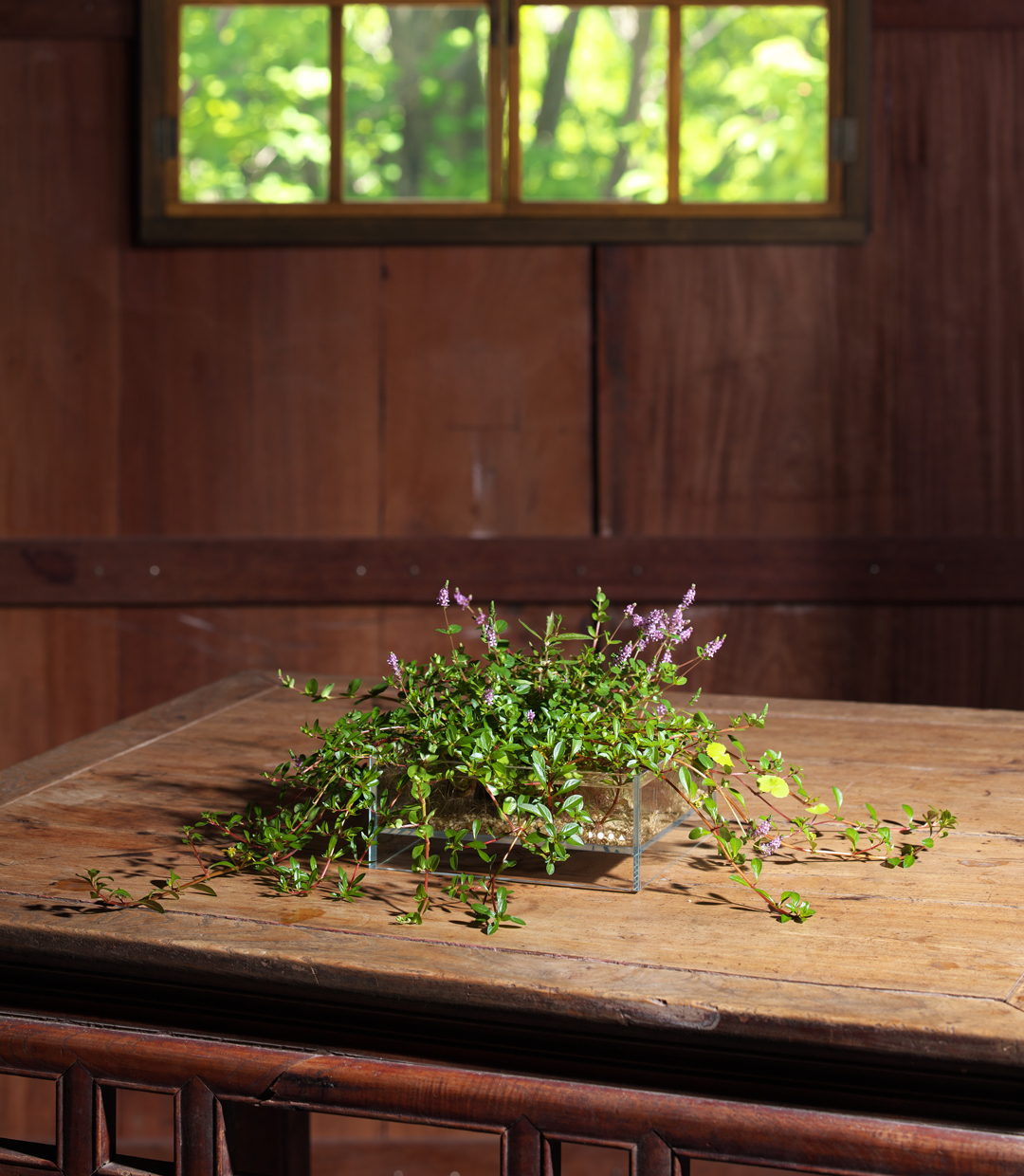ADA PLANTS GALLERY #15 Hygrophila polysperma
ADA’s Research and Development Department, called the Green Lab, develops a wide variety of greenery products. In this article, we would like to share with you some interesting bits of trivia about the plants produced in the lab, and a part of their true nature we see from time to time.
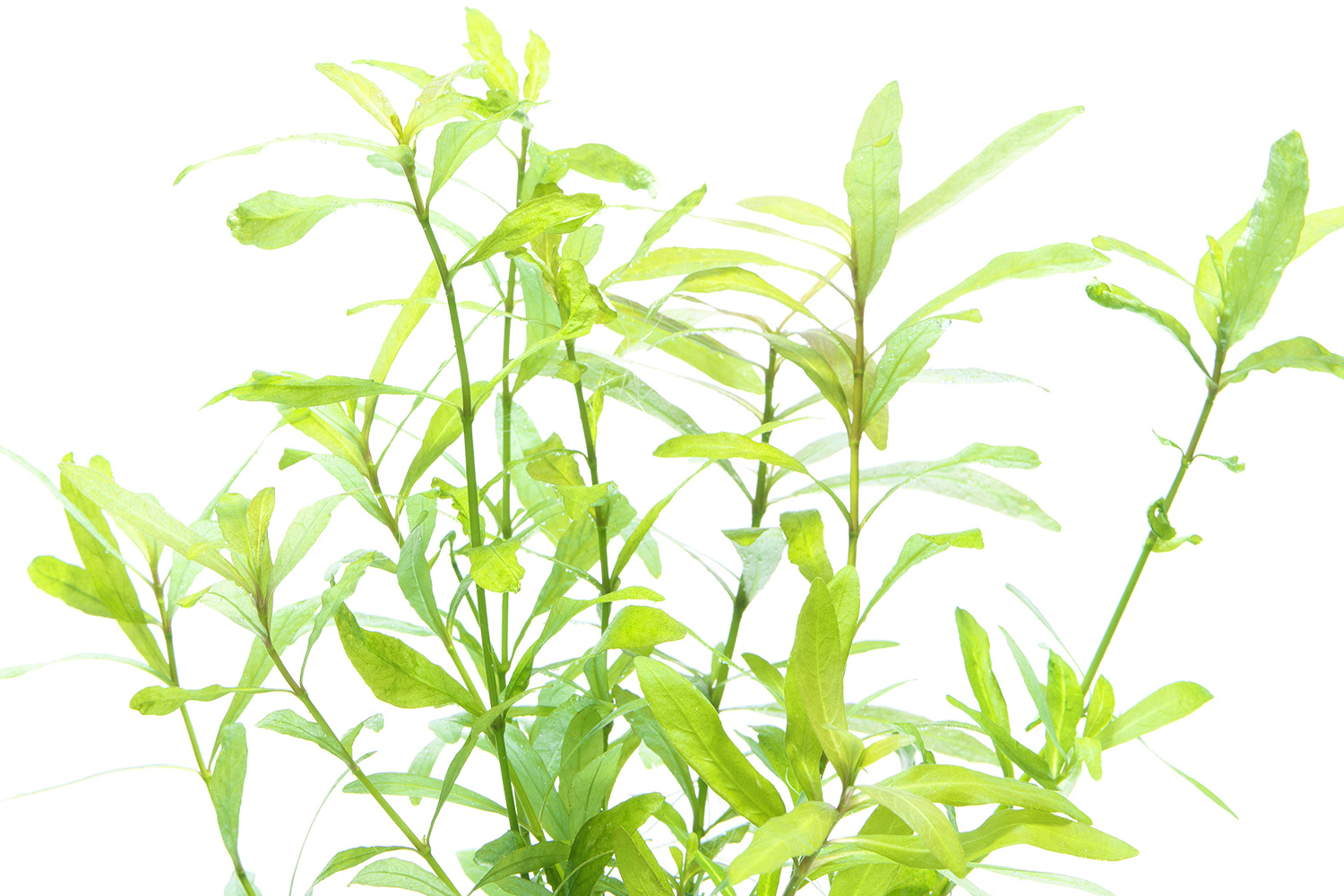
All-rounder stem plant
Hygrophila polysperma is easy to grow in submersed condition and can be easily maintained to its ideal shape. On the other hand, it grows well and reaches the water surface quicky because its internodes tend to stretch out immediately after planting. However, the internodes can get narrower by repeating the maintenance, and the plant can get smaller and you can slow down the growth rate. The plant can be an option as a middle ground plant and is adequately suitable for planted aquariums smaller than W60cm. In contrast, it can be also grown in a large deep aquarium, hence it is a relatively frequently used aquatic plant even in ADA’s super-large aquariums.
Hygrophila polysperma is easy to grow in submersed condition and can be easily maintained to its ideal shape. On the other hand, it grows well and reaches the water surface quicky because its internodes tend to stretch out immediately after planting. However, the internodes can get narrower by repeating the maintenance, and the plant can get smaller and you can slow down the growth rate. The plant can be an option as a middle ground plant and is adequately suitable for planted aquariums smaller than W60cm. In contrast, it can be also grown in a large deep aquarium, hence it is a relatively frequently used aquatic plant even in ADA’s super-large aquariums.
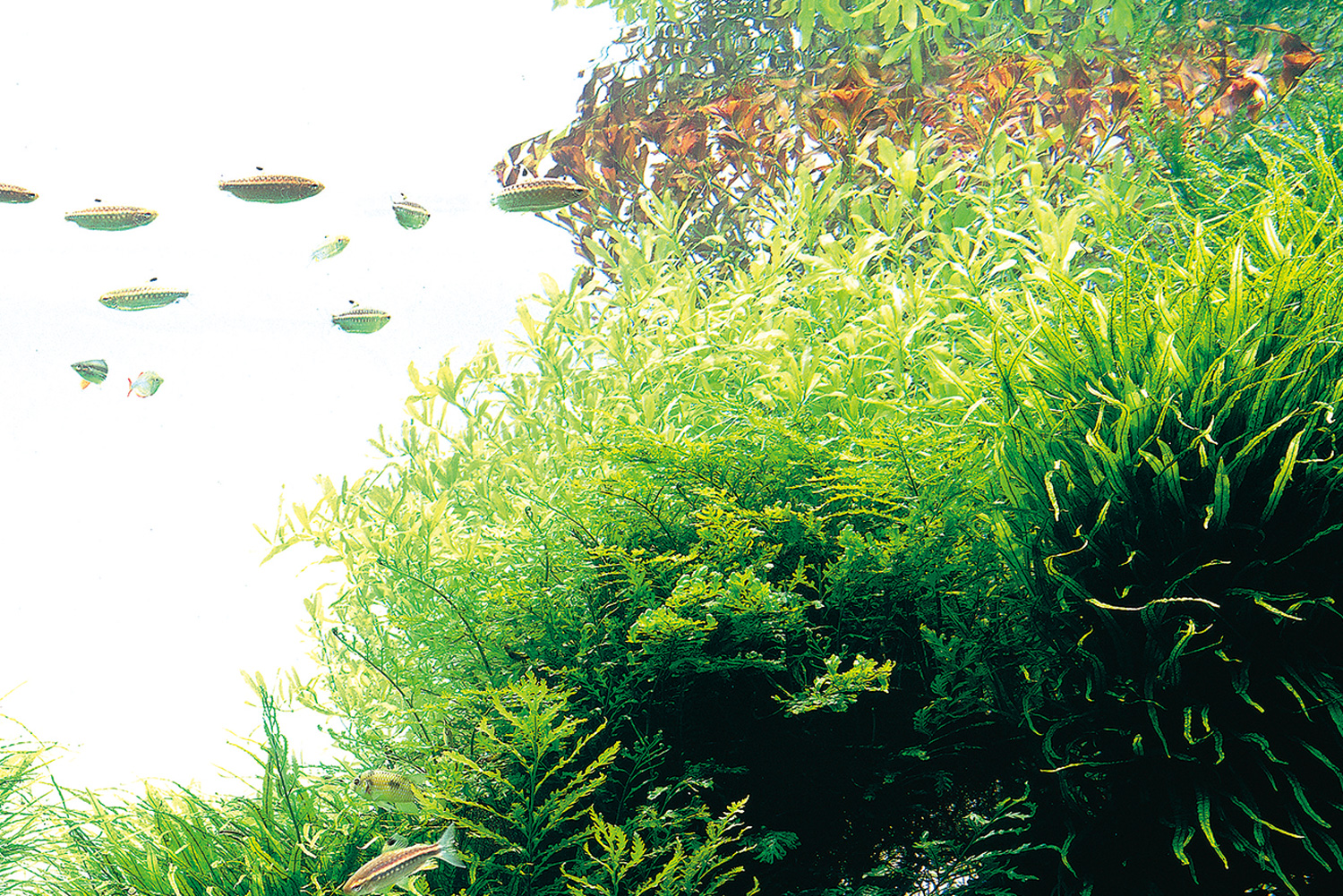
Obvious leaf color change
Hygrophila polysperma often changes its leaf color depending on the environment in which it is grown, even in the same individual. One factor is the brightness of the lighting. The leaves are generally known to be light green, but under strong light, they turn brown. If you want to get closer to the ideal color, you should adjust the light to a level that does not interfere with the growth of other aquatic plants. Also, if there are too many lateral buds or not enough nutrients, it is more likely to result in chlorosis. In such cases, use liquid fertilizers or “Bottom Plus”.
Hygrophila polysperma often changes its leaf color depending on the environment in which it is grown, even in the same individual. One factor is the brightness of the lighting. The leaves are generally known to be light green, but under strong light, they turn brown. If you want to get closer to the ideal color, you should adjust the light to a level that does not interfere with the growth of other aquatic plants. Also, if there are too many lateral buds or not enough nutrients, it is more likely to result in chlorosis. In such cases, use liquid fertilizers or “Bottom Plus”.

This aquatic plant is recommended for beginners as it easily changes leaf color and serves as an indicator of the growing environment.
With firm, tight emersed leaves.
Emersed Hygrophila polysperma does not grow as fast as submersed one and often grows vertically and stays at about 15 cm, gradually forming stolons and lateral buds from them. It produces small purple flowers, which can be enjoyed in a wide range of situations, from Paludariums to emersed scenes in open-top aquariums. It has a relatively wide range of adaptation to the environment and can easily germinate and root from nodes or leaf segments after trimming, hence avoid spreading it outdoors.
Emersed Hygrophila polysperma does not grow as fast as submersed one and often grows vertically and stays at about 15 cm, gradually forming stolons and lateral buds from them. It produces small purple flowers, which can be enjoyed in a wide range of situations, from Paludariums to emersed scenes in open-top aquariums. It has a relatively wide range of adaptation to the environment and can easily germinate and root from nodes or leaf segments after trimming, hence avoid spreading it outdoors.
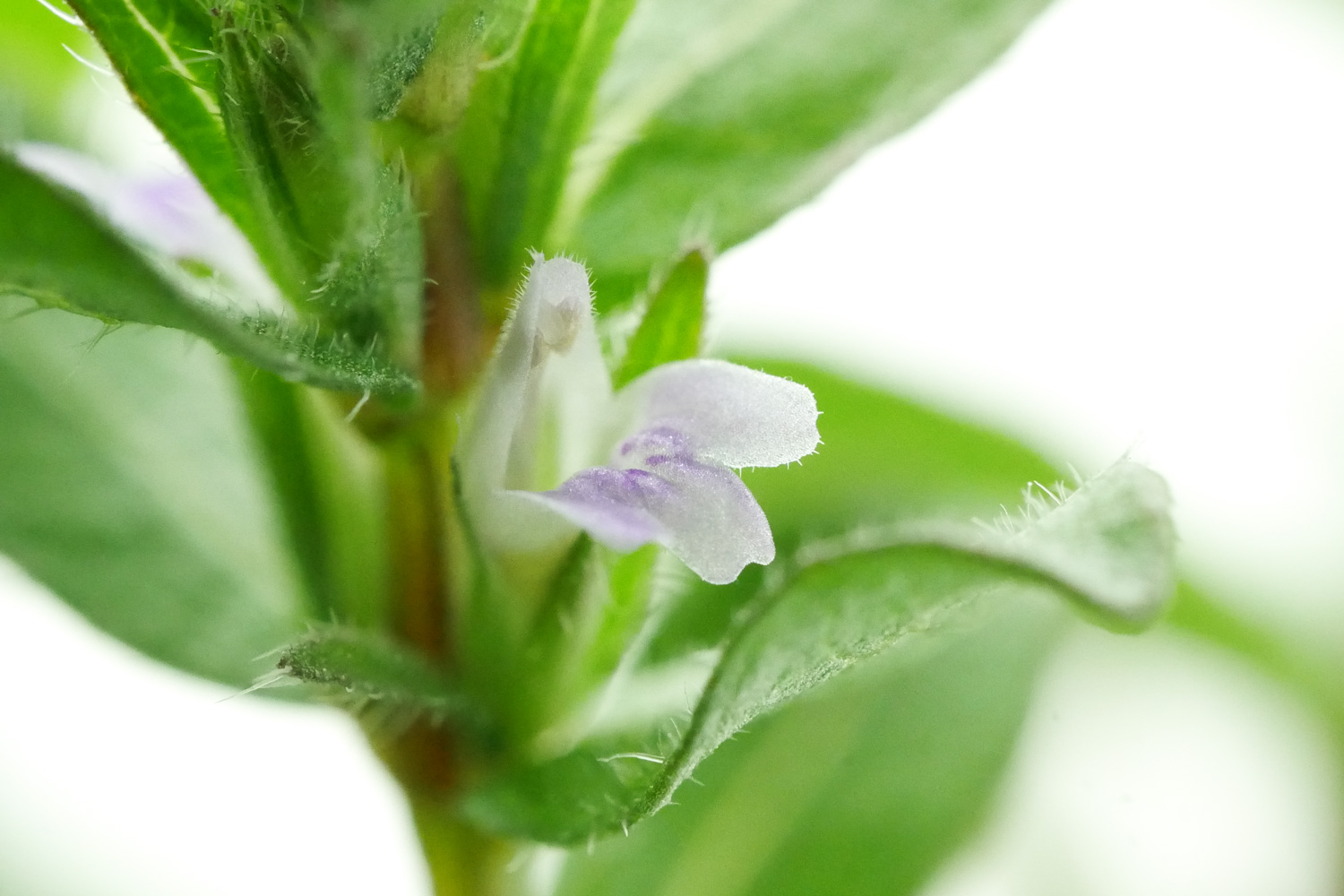
Unique species are also available.
The wide distribution of Hygrophila polysperma from South Asia to Southeast Asia may be the reason for its wide variation. Currently, several species of Hygrophila polysperma mutations are in circulation. Hygrophila sp. ‘Tiger’, the most well-known, is characterized by its creeping nature, ochre-colored (with tiger patterns) leaves. Hygrophila polysperma ‘Gold-brown’ easily grows upright and develops sharp looking emersed leaves. Its name might suggest a champagne coloring, but its bright reddish-brown color adds color to the background. Hygrophila polysperm var. ‘rosaenervis’ is a spotted species of the popular polysperm.
The wide distribution of Hygrophila polysperma from South Asia to Southeast Asia may be the reason for its wide variation. Currently, several species of Hygrophila polysperma mutations are in circulation. Hygrophila sp. ‘Tiger’, the most well-known, is characterized by its creeping nature, ochre-colored (with tiger patterns) leaves. Hygrophila polysperma ‘Gold-brown’ easily grows upright and develops sharp looking emersed leaves. Its name might suggest a champagne coloring, but its bright reddish-brown color adds color to the background. Hygrophila polysperm var. ‘rosaenervis’ is a spotted species of the popular polysperm.
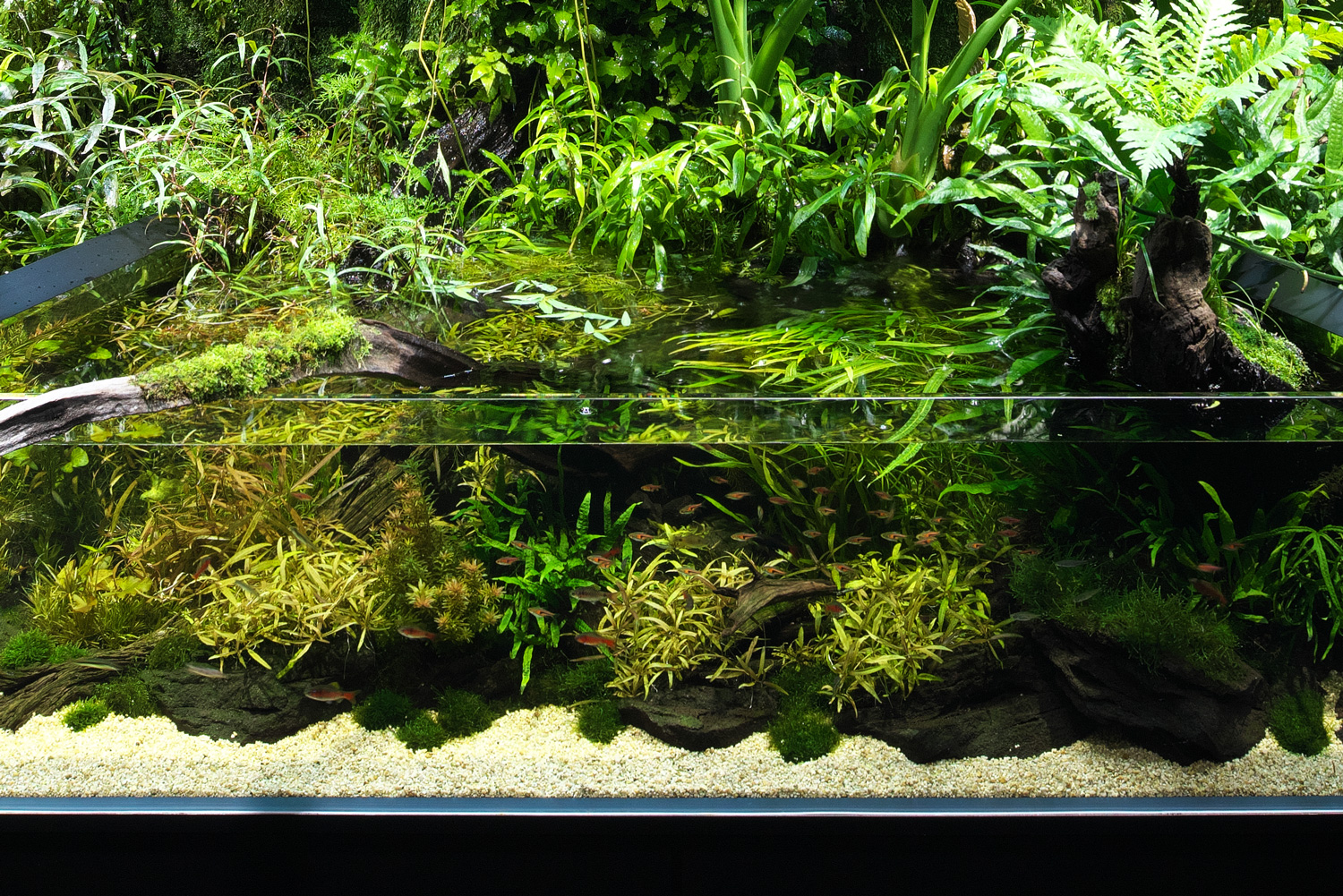
![[ STYLE OF EPIPHYTIC PLANTS ] Effective use of epiphytic aquatic plants in layout scenes](https://www.adana.co.jp/wp-content/uploads/sites/3/2024/04/ep_img_ogp.jpg)
